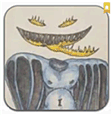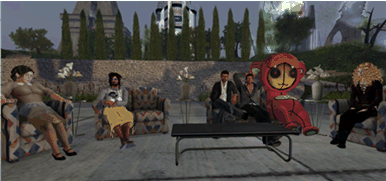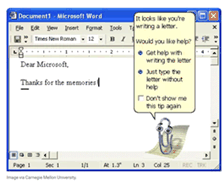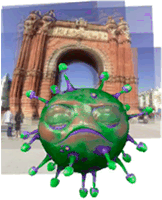Content for TR 22.856 Word version: 19.2.0
1…
5…
5.2…
5.3…
5.4…
5.5…
5.6…
5.7…
5.8…
5.9…
5.10…
5.11…
5.12…
5.13…
5.14…
5.15…
5.16…
5.17…
5.18…
5.19…
5.20…
5.21…
5.22…
5.23…
5.24…
5.25…
5.26…
5.27…
5.28…
6
7…
7.2
8
A
B
C…
A Avatar Service Considerations p. 93
The term Avatar originated in writings associated with Hindu religion, referring to an incarnation of a divine being on Earth, significantly Vishnu.
In computing an avatar is a graphical representation of a user or user's character or persona. [Wikipedia-Avatar] The term was used to describe the player's character in a number of games in the late 1970s into the late 1980s. In 1992, Neal Stephenson used the term to describe virtual simulation of the human form in his novel Snow Crash, in which he also coined the term metaverse. [Stephenson]
Avatars are used in a number of ways today, besides as digital representations of characters in video games. The representation is often thought to be one to one (one person is represented by one digital representation), but this cannot be generalized. Some people are represented in multiple ways (especially over time), some groups use an avatar to represent them, sometimes programs or automated services are represented with an avatar (and these aren't human users at all.) In most applications, people can choose their own avatars and they may change these frequently, even adopting the avatars of other users if there is no policy to prevent this.
Avatars may serve as a digital representation of a user in Internet forums. These are often a kind of cartoon version of a person's face or an image representing them, often. For example, this is an avatar on Boardgamearena.com, for a community member known as "tree mile."

This digital representation is static (that is, it is generally not animated,) and serves to provide a user with a memorable and unique personality in the on-line forum, but without divulging my actual appearance. This is a common use on social media platforms.
A social forum, in which avatars are remote controlled, animated. An early example of this was SecondLife. [Linden Lab] This is an example group of avatars in discussion.

This platform does not feature a 'game.' Rather players interact, build things, share information, purchase virtual accoutrements. Some institutions built an on-line virtual presence, such as universities, private corporations even political parties to enable interaction between users represented as avatars.
Avatars have been used as a way to improve interaction between people using software or accessing on-line services and software. An example is "Clippy" a paperclip 'help feature' in Microsoft Office 97.

There are many other such digital representations that are used, e.g. for on-line chat services for service desks, etc.
Motion capture / animated avatars are used to stand in for a person. They model and reproduce or mimic the user's movements, facial expressions and often represent specific facial animation for 'talking' in a way reminiscent of cartoons. One area where this has developed is a kind of content production by 'vtuber' contributors. Tools to create avatars (vtube animation software) can be coupled with motion capture software to allow contributors to generate video content in the form of animation. The creator is represented by media generated by means of a model and cameras. Sound can be added or recorded along with the video input.

Figure A-4: Avatar Live Animation Generated from Camera and Microphone Input
(⇒ copy of original 3GPP image)
(⇒ copy of original 3GPP image)
A 'live' social media application can be designed around the techniques of animation and visual capture (as in the previous bullet) can provide an opportunity for users to communicate as cartoon digital representations of themselves with encoding and presentation in real-time. The communicating partner may be a human user or a 'bot.' Generally 'chatbot' services do not include such an animated figure - an icon or static image is used to represent the AI.
A sophisticated 'video capture,' then transformation into a cartoon form with audio, and rendering this into media, is a very computationally intense task. There are many tools to create avatars and vtube video clips, however these are generally not 'live.' Figure A-5 presents 'Kizuna AI' a pioneering successful Vtuber personality. The media featuring these avatars is generated through tools that often involve animation editing and audio-visual production operations. Pure animation techniques can be enhanced with motion capture and facial expression capture.

References
[Wikipedia-Avatar]
[Stephenson]
Stephenson, Neal "Snow Crash," Bantam Books, New York, 1992.
[Linden Lab]